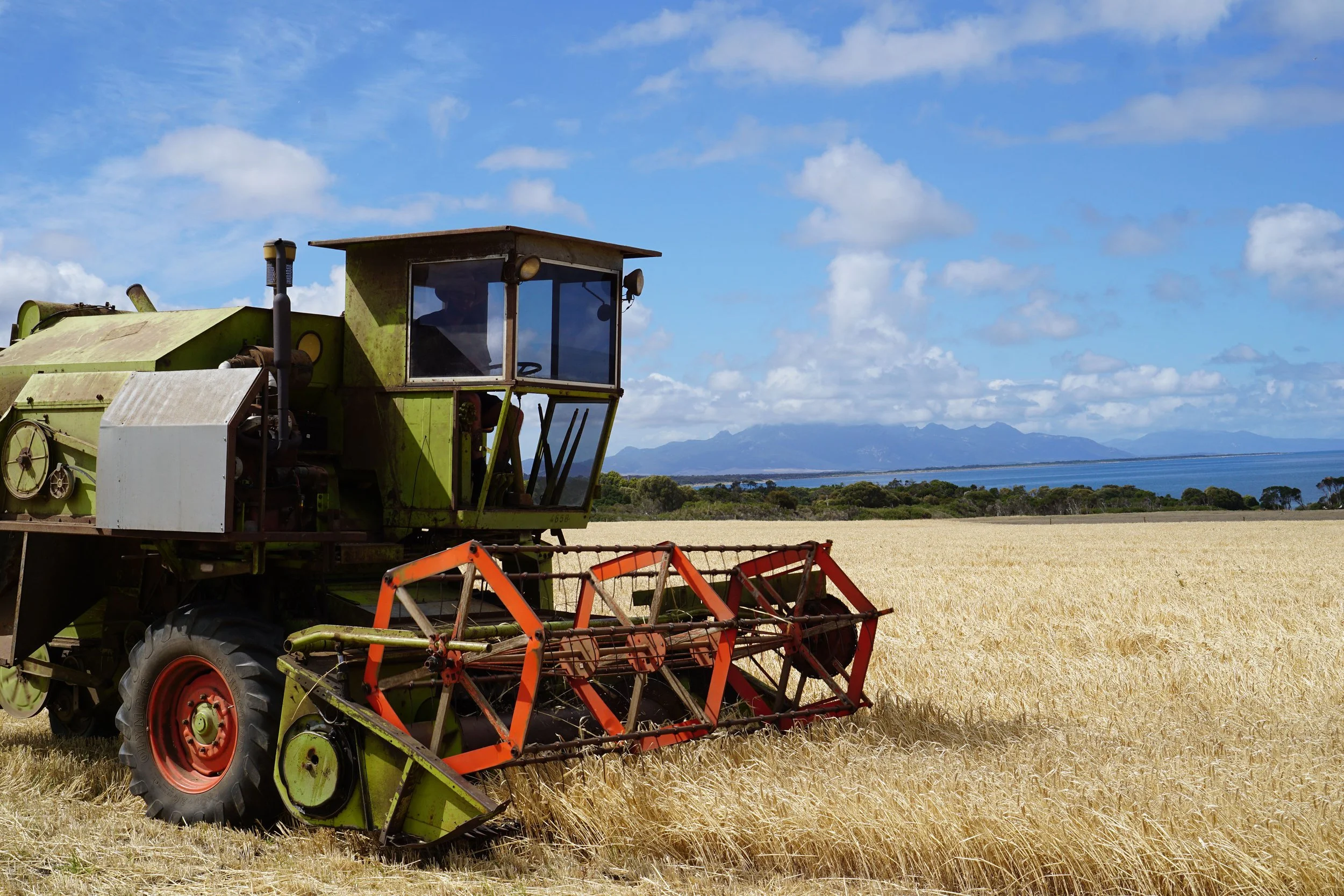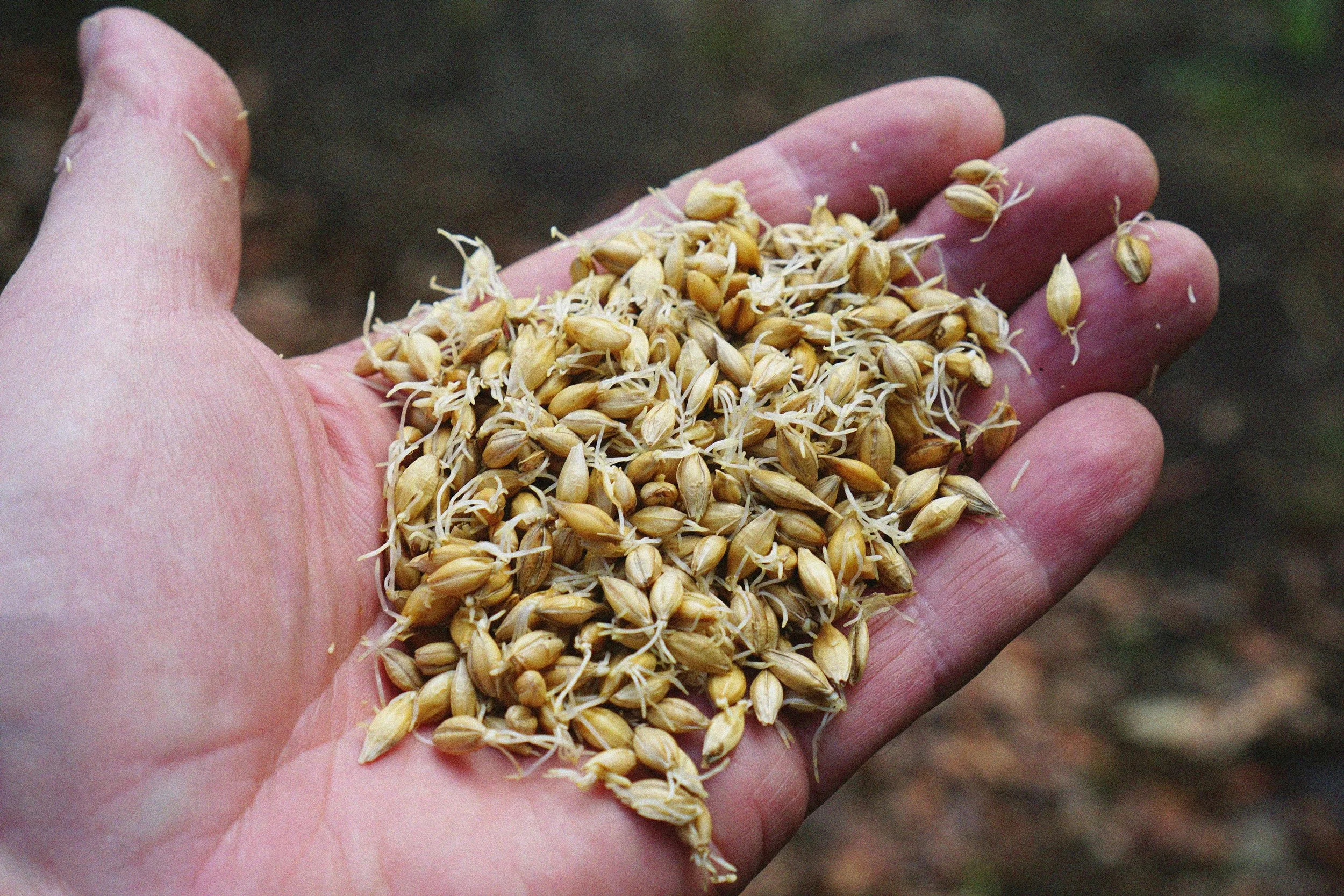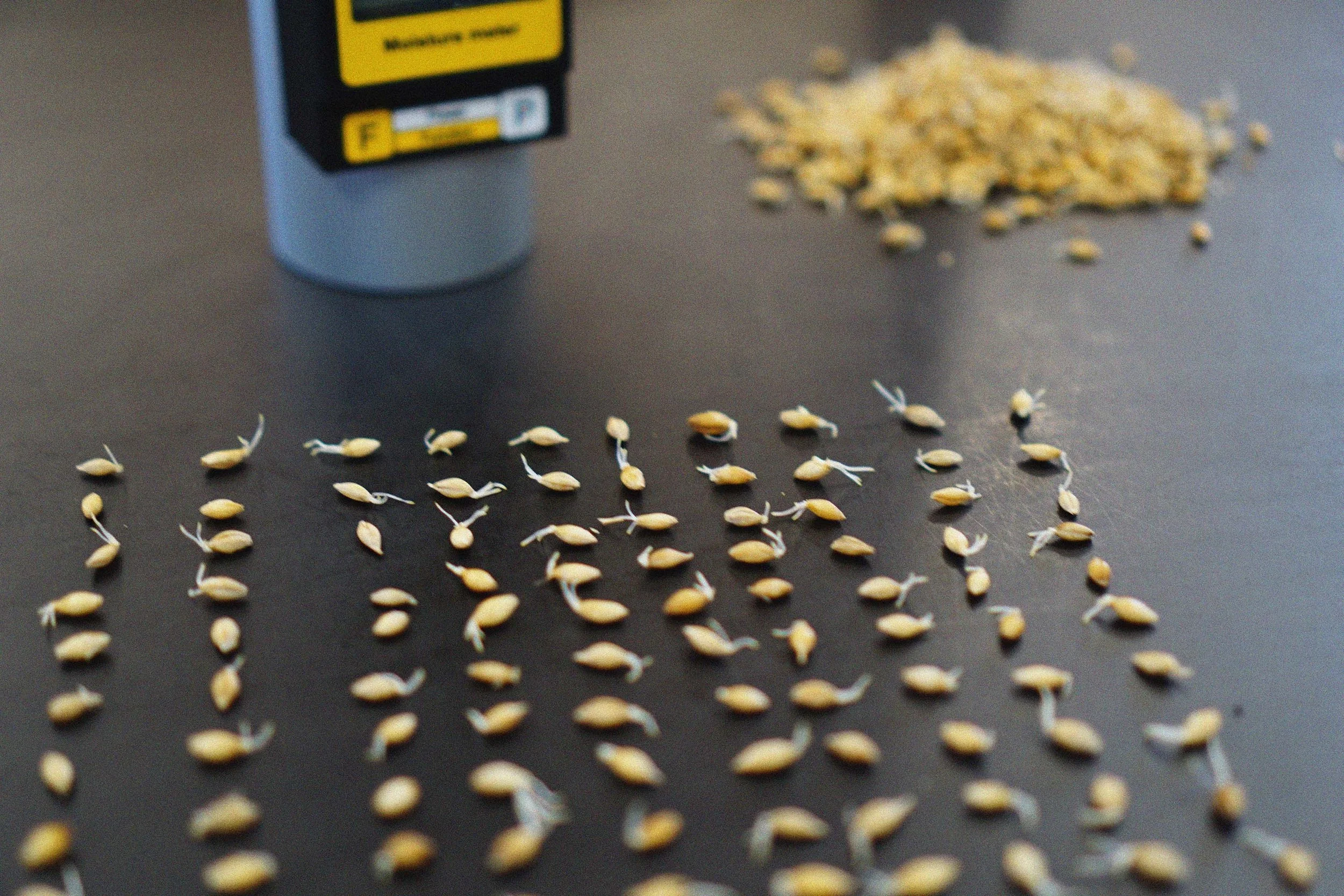
FLOOR MALTING TRIALS: THE FARM JOURNEY CONTINUES
We've been having some fun with our grain this year, building our knowledge and experience malting the grain we have grown on the Furneaux Farm at Sawyers Bay. As you may know, our first harvest grain in 2024 went up to Voyager Craft Malt in NSW for malting, ensuring we got the best possible outcome from the process, including being able to peat during germination on a large scale.
Sending the grain off-island however, is unsustainable. Shipping 10 tonnes from a remote island across to the mainland by sea, then trucking it all the way from south Victoria to inland NSW and all the way back again was quite a feat, and one we'd rather not repeat. So when we got to our next harvest in January 2025, we decided to keep the raw grain on the island and play around with the most basic and traditional form of malting.
OK SLOW DOWN, WHAT IS MALTING?
Malting is the controlled process of germinating and drying cereal grain, most commonly barley, to prepare them for brewing or distilling. Barley has a lot of starch, which makes it a major food staple around the world. But we don't need starch for making alcohol, we need sugar! Malting is the process which activates natural enzymes inside barley. These enzymes convert the grain’s stored starches into simpler sugars and modify its proteins, creating the ideal building blocks for fermentation.
It begins by steeping the raw grain in water to encourage it to sprout. Once germination has progressed to the right stage, the process is halted by drying or kilning the malt, which preserves those enzymes while also developing flavour and colour. The resulting malted grain provides the essential sugars and character that define the taste and texture of beer and whisky. If at this point you were not a brewer, you could use the malt to make products like Milo or Maltesers.
Sprouted barley - our varietal was Planet, 2nd gen Flinders Island
SO WHAT IS "FLOOR MALTING"
Nowadays the malting process is done is large malt plants who will source their grain from a variety of farmers and consolidate it in huge silos, germinating and kilning mechanically in vast quantities. It's from these malt plants that brewers and distillers around the world get our base ingredients. When we talk about single malt whisky, we're talking about brewing and distilling using one single malted grain, being barley. As opposed to a combination of wheat, or in the case of bourbon - corn. When we at Furneaux talk about Tasmanian Single Malt Whisky, we are referring to a whisky made using 100% Tasmanian malted barley.
To date we have used mainland Tasmanian barley, but as our farm operation develops, this is starting to change. Everything we brewed and distilled from November 2024 was using our own Flinders Island grown malt barley. This first harvest grain is now exhausted, so we are working on the next step - malting capability on the island, ensuring full supply chain independence.
A maltster at Kilchoman in Scotland raking the grain, and (below) a traditional Scottish malthouse with the pagoda chimney, the source of the strong peat smell around Islay
Floor malting is exactly what it sounds like. Before the big malting plants existed, traditional malting involved soaking your grains, then tipping them out onto a floor where they can germinate. The grain bed needs to be spread relatively thin in this process, because so much energy is created during germination that it can become quite hot, and "cook" the grain. The rootlets from sprouting can also knot together causing difficulties.
Thus, the grain needs to be raked regularly, meaning very early mornings and very late nights turning it over and over again to ensure an even germination. The labour intensive nature of the process is largely why it's rarely used today. When the grain has reached a specific point in germination, it will then be moved into a kiln for controlled drying, or in the case of some Scottish malthouses, a large peat fire will be lit under the malting floor, imparting that strong peat smoke aroma while drying the grain. It's here where peated whisky was born.
HOW DO WE DO IT ON FLINDERS ISLAND THEN?
While our scale is significantly smaller, the concept is essentially the same. We modified some storage cubes as steeping vessels, letting our grain soak and rest multiple times. We then spread it out into our trailer kiln which has a false floor, perfect for this purpose. Under close eyes the grain germinated in the kiln over the next couple of days, being turned and tested at the crack of dawn and well after dark. When we reached the desired growth stage we began kilning - pumping hot air through the grain bed to stop germination and produce a useable malt at the end!
It was an exciting and eye-opening process. There was a lot of testing along the way, looking for growth rates, moisture content, irregularities. It was so much fun to see our own crop come to life, and the smell of green malt is so bright and beautiful. So much of creating a quality malt starts at the farm, we learnt a lot about how to manage our crops in the future so we can make a consistent product. This trial gave us the foundations to upscale our grain process capabilities in-house.
Haydn shovelling our grain into the kiln for germination, and (below) grain samples being tested
WHAT NEXT?
We didn't use peat in this malting experiment, wanting to keep the grain clean so we could taste it in it's raw form. The trials were pretty successful overall, we definitely found areas where we could improve our process, but at the end of it we ended up with a perfectly useable malt, grown and processed all on Flinders Island! It was such a great opportunity to learn more about this traditional process, and will form a huge part of our own inevitable malthouse on the Furneaux Farm.
The whisky from our own island grown grain is now comfortably sitting in oak casks in our coastal bond store, where it will be maturing for another few years.
In the meantime, our whiskies are produced using 100% Tasmanian malt with one small exception, the small portion of Scottish peated malt we blend with our own Flinders Island peated malt into the mash bill for our Smoky Wedding, combining the old world and new world peat profiles.







